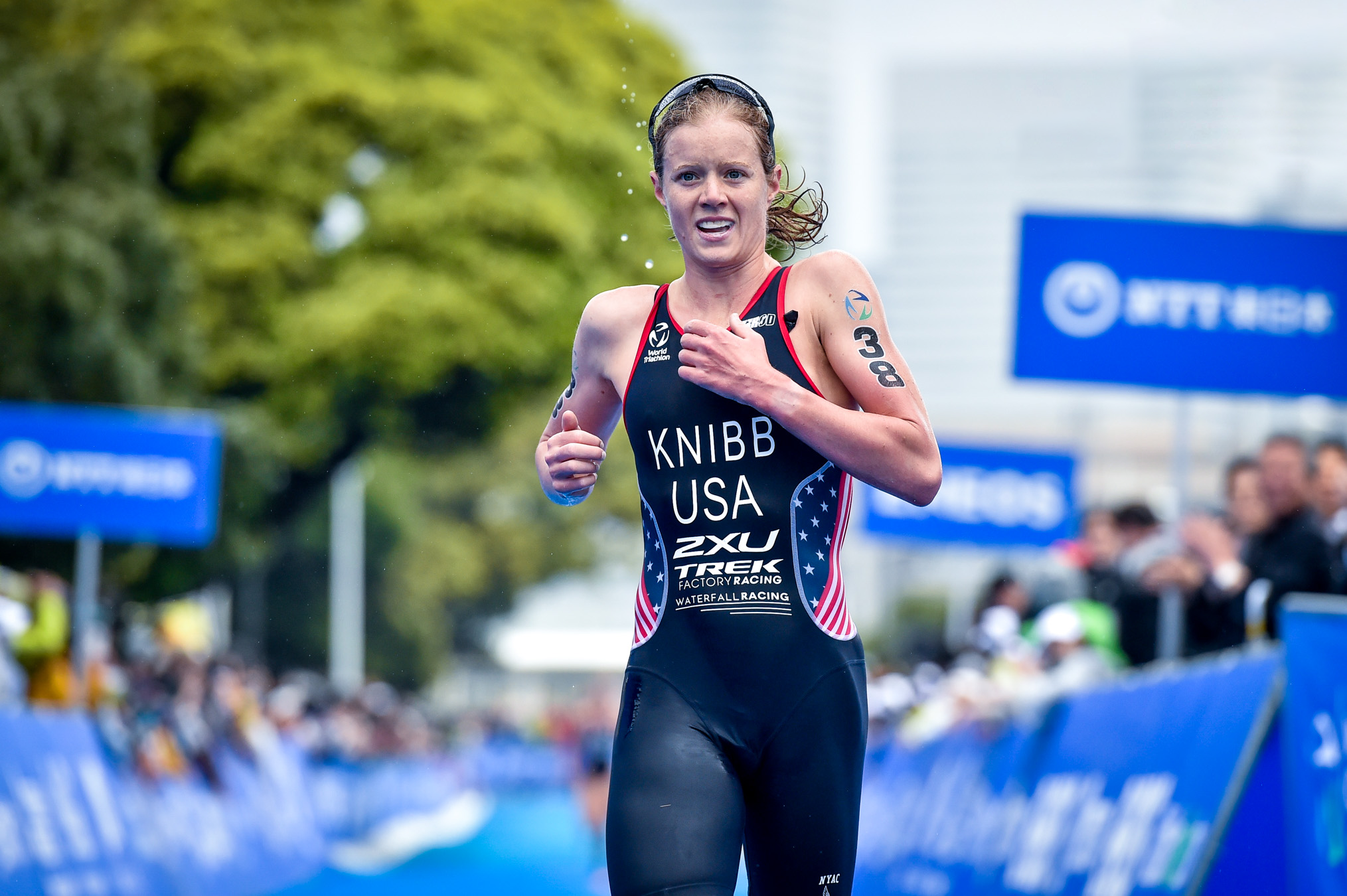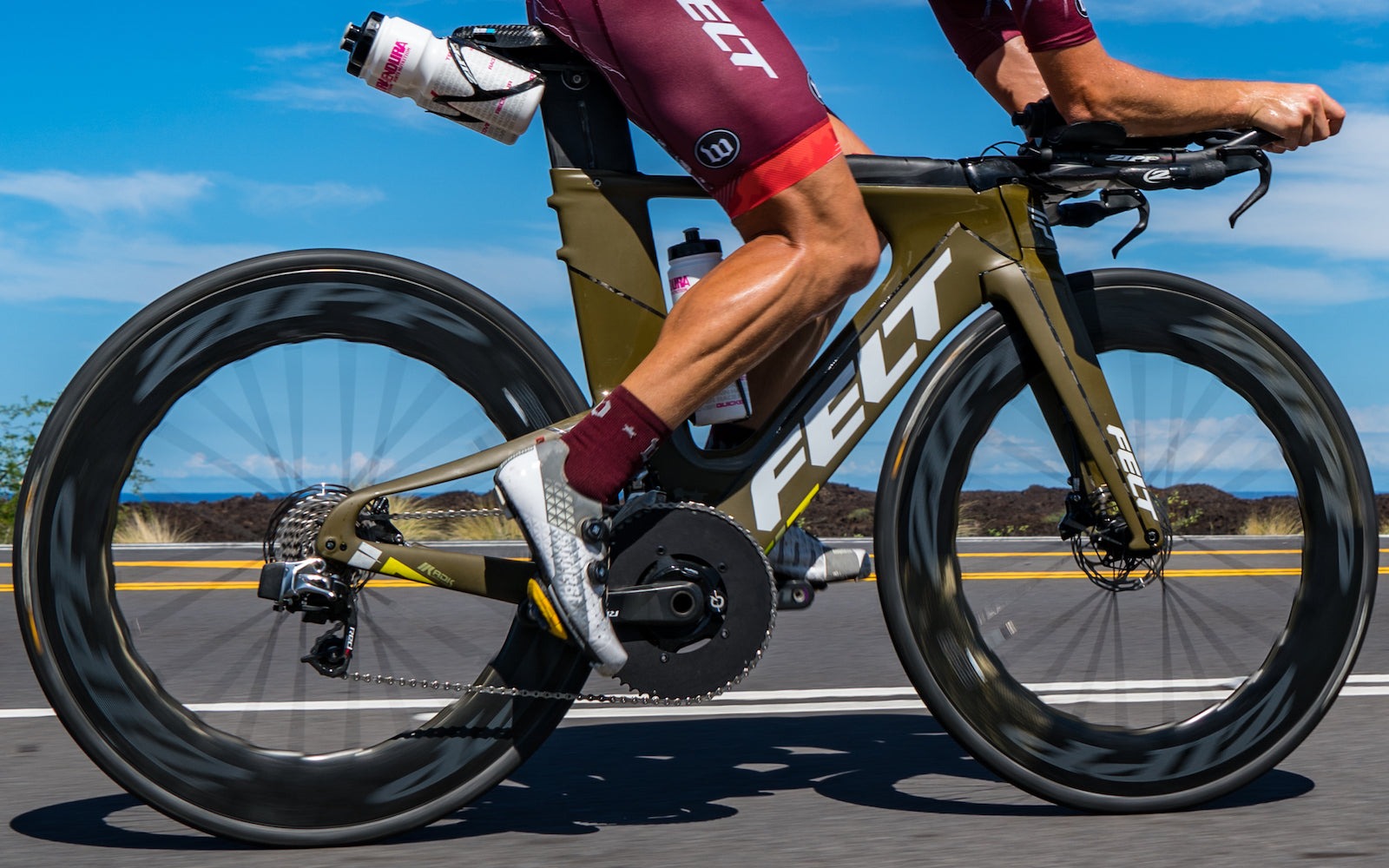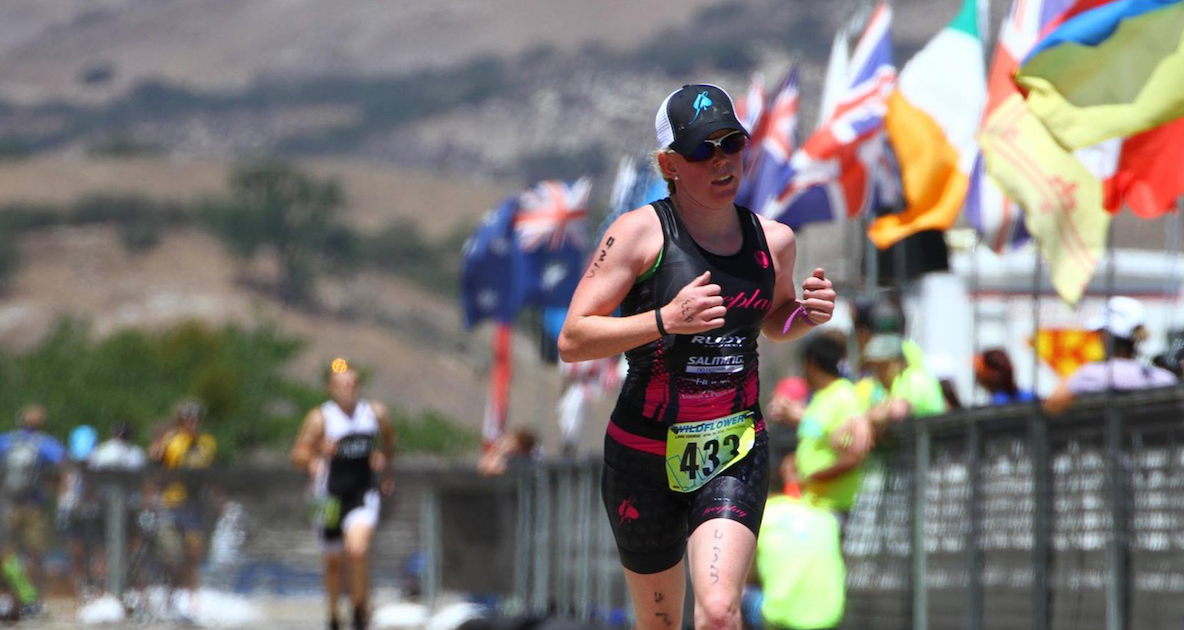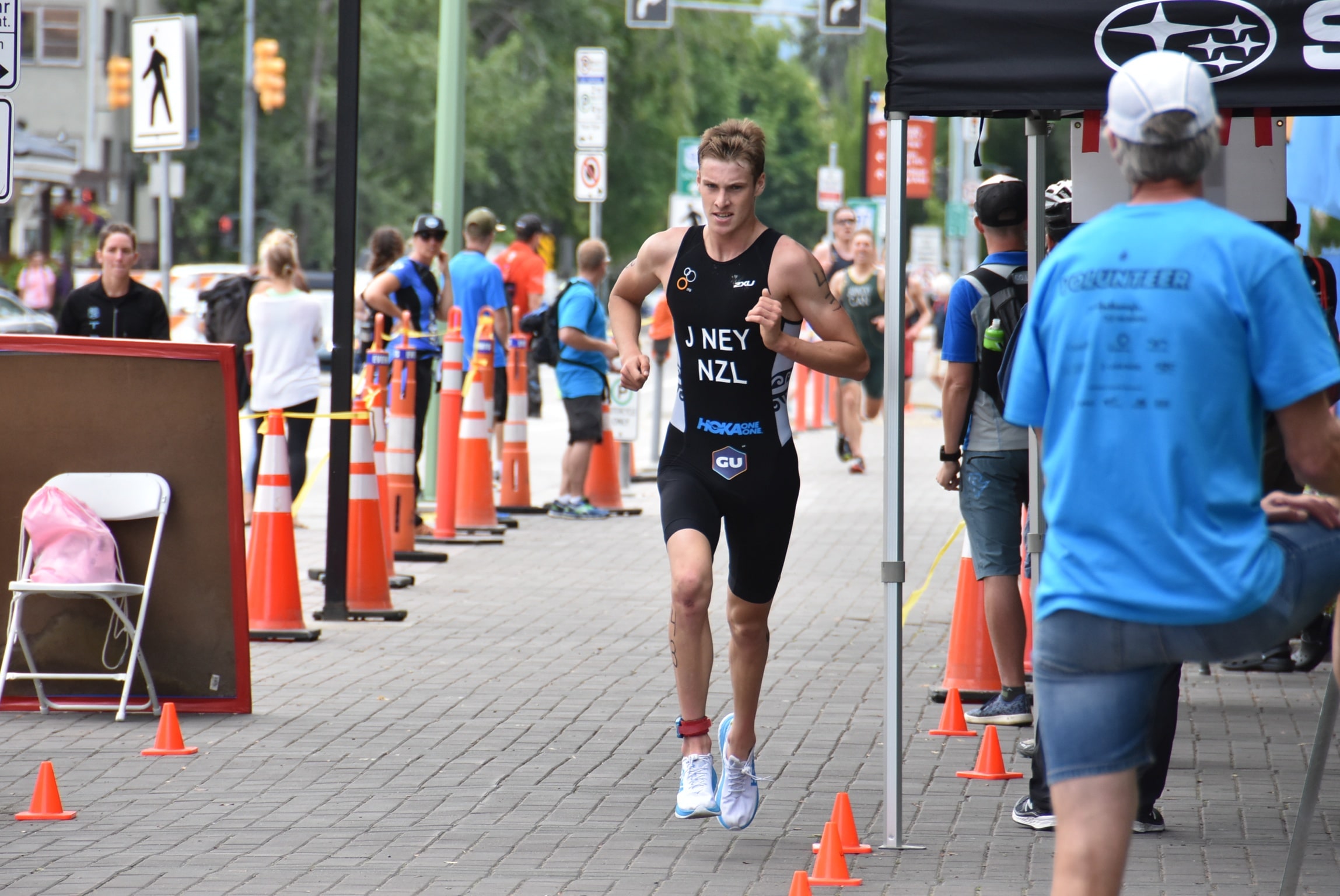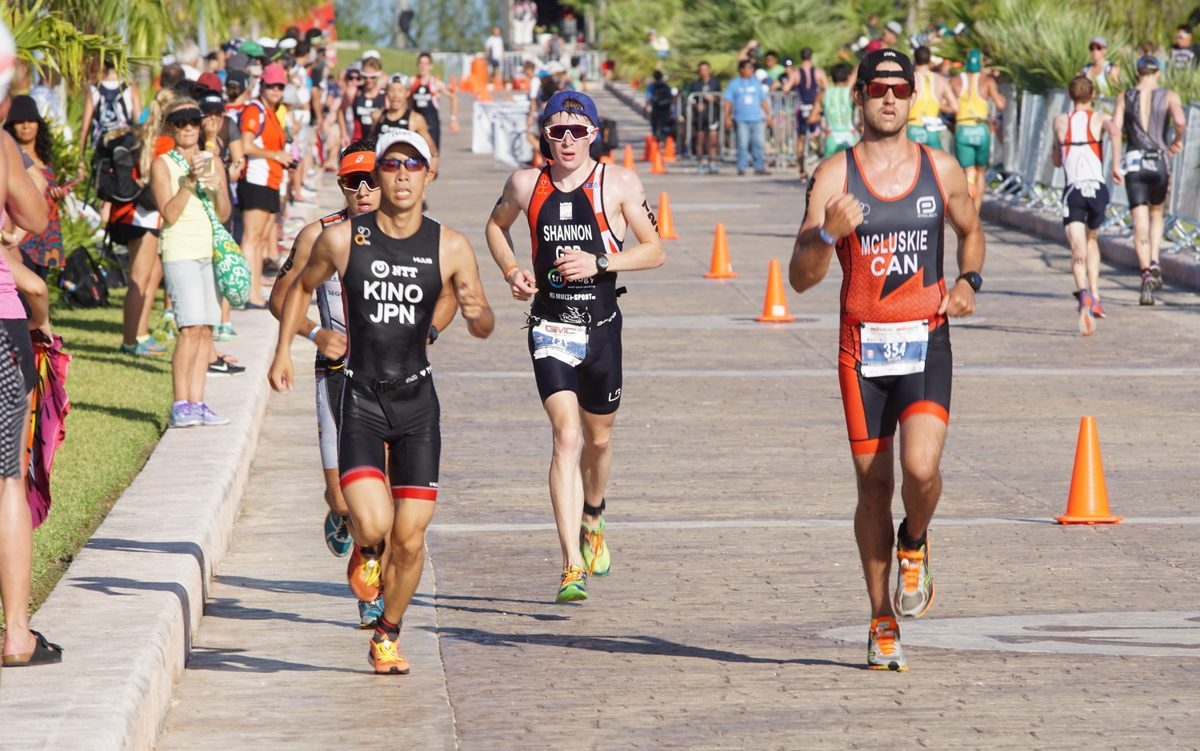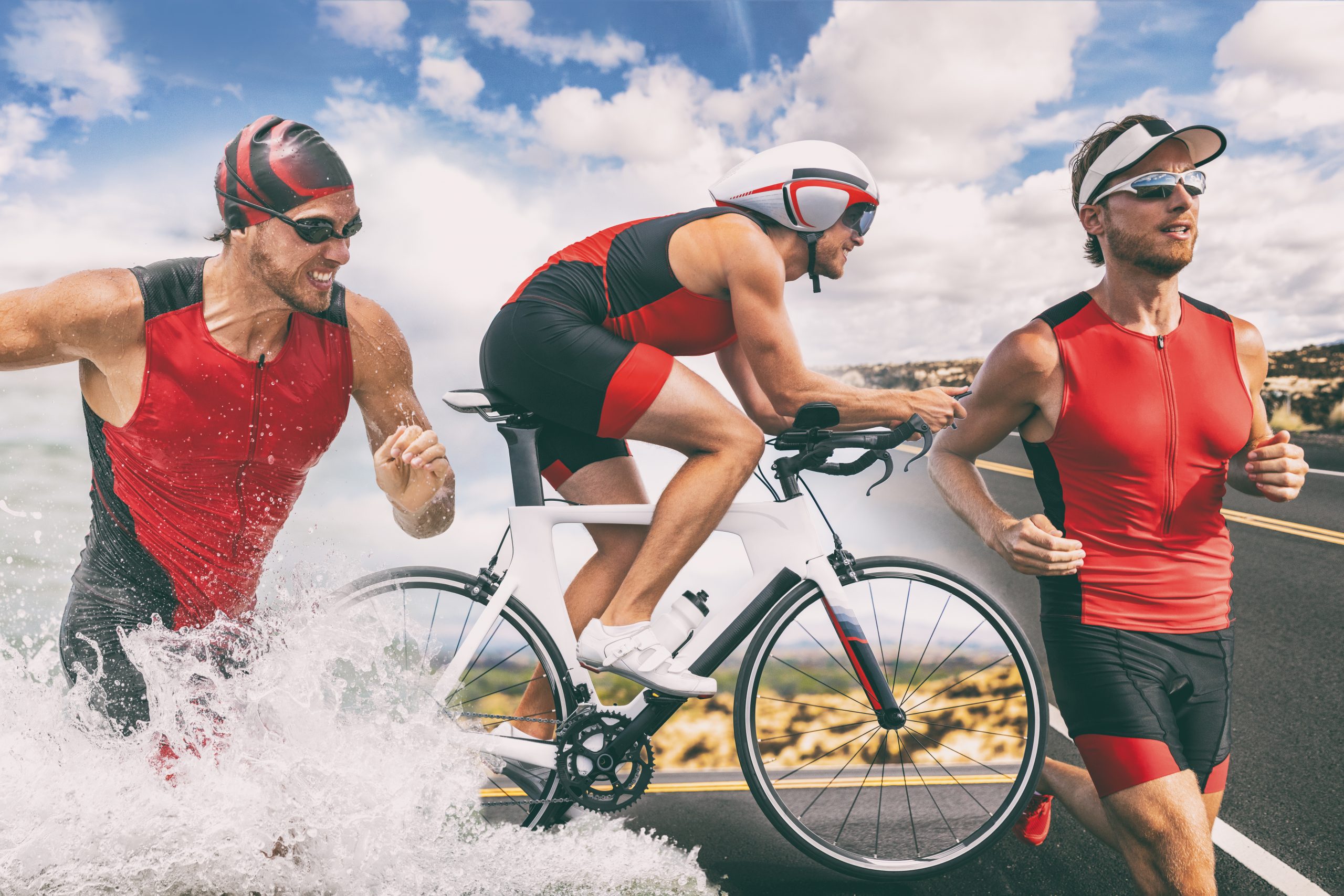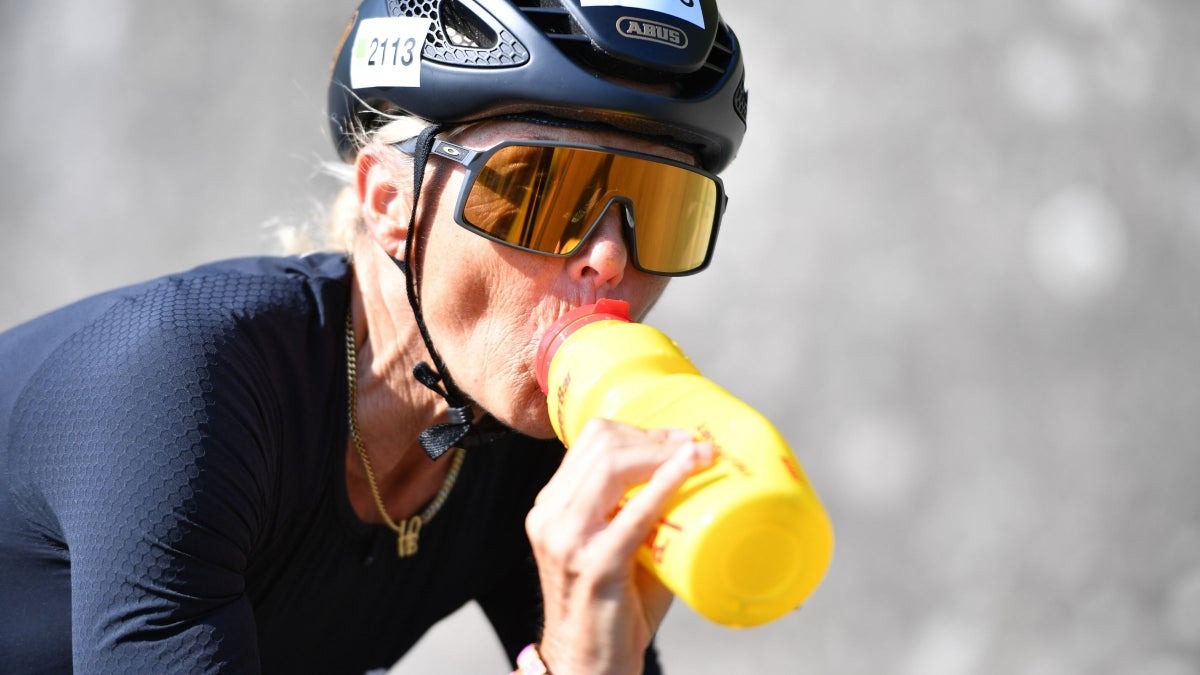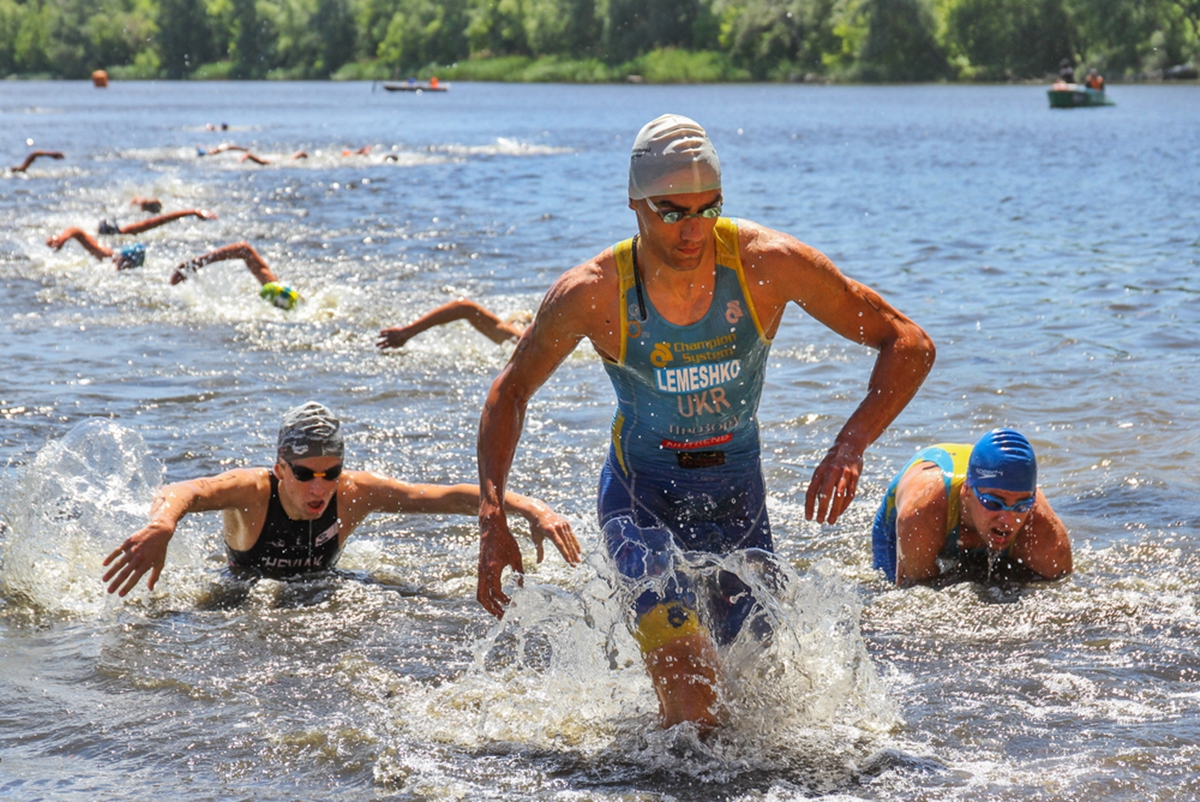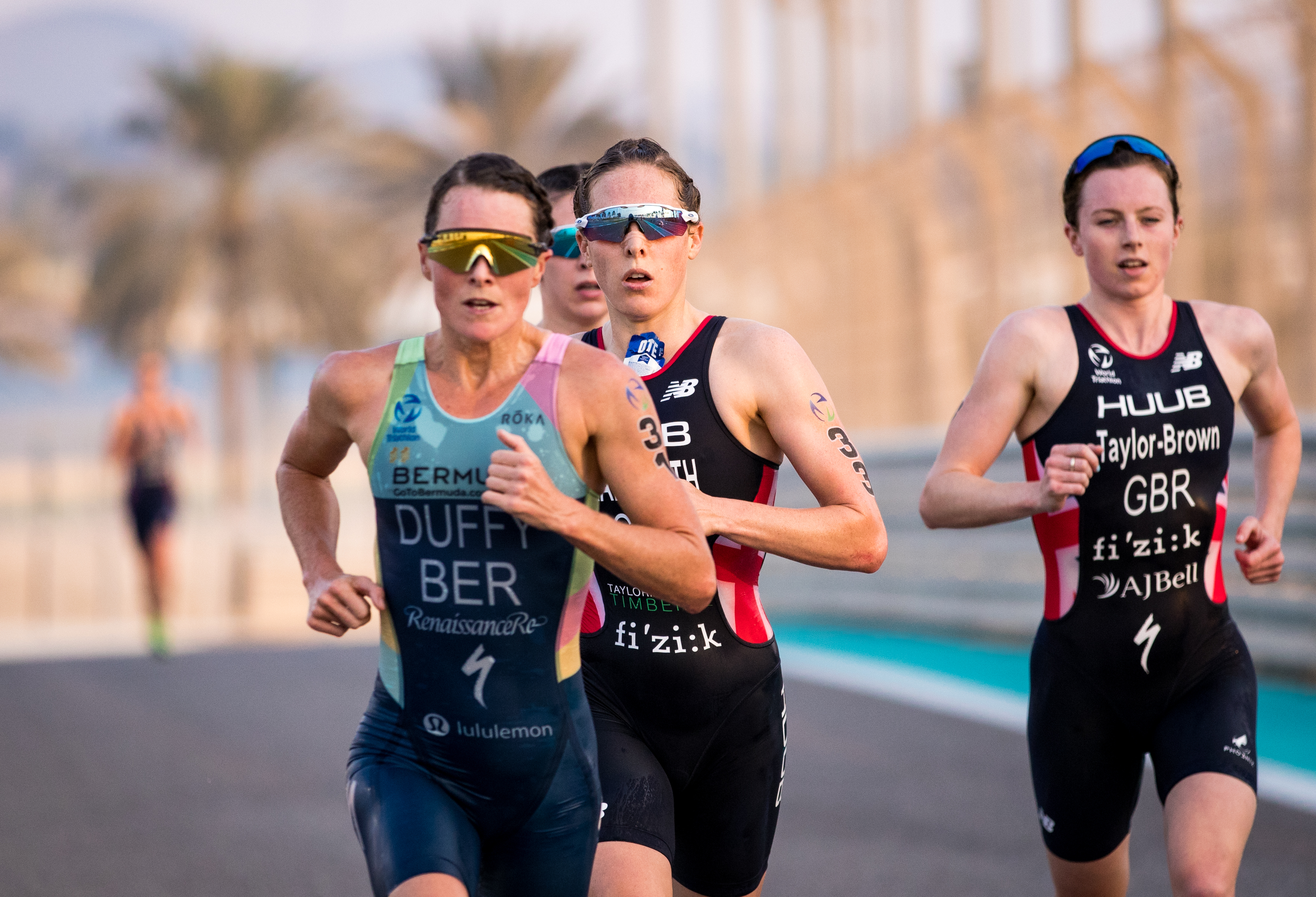Home>Misc>Featured>Which Muscle Energy System Is Used For A Triathlon


Featured
Which Muscle Energy System Is Used For A Triathlon
Modified: January 2, 2024
Discover the featured muscle energy system used in a triathlon, optimizing performance and endurance. Enhance your training and achieve maximum results.
Introduction
Triathlons are exhilarating multisport events that test the endurance, strength, and mental fortitude of athletes. Comprising swimming, cycling, and running segments, triathlons require participants to push their bodies to the limit over long distances. To successfully complete a triathlon, athletes must have a deep understanding of their body’s energy systems and how to optimize their utilization during the race.
The human body relies on three primary energy systems to fuel physical activity: the phosphagen system, the glycolytic system, and the aerobic system. Each system has a different capacity for energy production and is utilized to varying degrees during different levels of intensity and duration. Understanding how these energy systems work and their role in a triathlon is vital for any athlete aiming to achieve their best performance.
In this article, we will delve into each energy system, explore how they are utilized during a triathlon, discuss the factors that influence energy system utilization, and provide effective training strategies to optimize energy system usage during a triathlon. By the end, you will have a comprehensive understanding of the muscle energy systems used in a triathlon and how to harness their power to enhance your performance.
Understanding the Three Energy Systems
To comprehend the energy systems utilized during a triathlon, it is crucial to understand the three primary systems that power physical activity: the phosphagen system, the glycolytic system, and the aerobic system.
- The Phosphagen System: This energy system provides immediate energy for high-intensity, short-duration activities, such as explosive movements and sprints. It relies on adenosine triphosphate (ATP) stored within the muscles and creatine phosphate. The phosphagen system can generate energy rapidly but has limited capacity, lasting for only a few seconds.
- The Glycolytic System: The glycolytic system kicks in when the demand for energy surpasses what the phosphagen system can provide. It relies on glycogen, which is stored in the muscles and liver, and glucose from the bloodstream. This system produces energy through the process of glycolysis, which breaks down glucose. The glycolytic system is the primary source of energy for high-intensity activities lasting between 30 seconds to 2 minutes.
- The Aerobic System: The aerobic system comes into play during low to moderate-intensity activities that exceed the duration capabilities of the previous two systems. It utilizes oxygen to generate energy through the breakdown of carbohydrates, fats, and, to a lesser extent, proteins. The aerobic system provides a sustained, long-lasting source of energy and is the primary system utilized during endurance exercises, such as the cycling and running components of a triathlon.
These energy systems work together continuously, adapting and shifting depending on the intensity and duration of the activity. Understanding how they operate and interact is essential for effectively fueling the body during a triathlon. In the next section, we will explore how each energy system is utilized during a triathlon and the specific demands placed on them during the different segments of the race.
Energy System Utilization During a Triathlon
A triathlon consists of three distinct segments: swimming, cycling, and running. Each segment places different demands on the body’s energy systems. Understanding how these energy systems come into play during each segment is crucial for pacing oneself and optimizing performance.
During the swimming portion of a triathlon, the phosphagen system is primarily utilized. The explosive nature of swimming strokes and the short duration of the swim necessitate the rapid energy production provided by the phosphagen system. Athletes rely on the stored ATP and creatine phosphate in their muscles to power their movements in the water.
As triathletes transition from the swim to the bike leg, the energy demands shift towards the glycolytic system. Cycling requires sustained muscular effort and endurance, which can quickly deplete the readily available ATP stores. The glycolytic system steps in to provide energy through the breakdown of stored glycogen and glucose. Athletes must manage their effort to maintain a steady pace without exhausting their muscles too early in the race.
Finally, during the running segment, the aerobic system takes center stage. Running is a highly endurance-dependent activity, relying on a steady supply of oxygen and fuel to sustain performance. The aerobic system utilizes the breakdown of carbohydrates and fats to generate energy, providing a sustained source of fuel for the muscles. Athletes must focus on maintaining a steady aerobic effort to ensure they have enough energy to complete the run.
Though each segment predominantly utilizes a specific energy system, it is important to note that all three systems contribute to energy production throughout the entire triathlon. The body continuously adapts and switches between energy systems depending on the intensity and duration of each segment. Optimizing energy system utilization is a key component to achieving a successful and efficient performance in a triathlon.
In the next section, we will dive deeper into each energy system and explore their specific roles in a triathlon. Understanding the intricacies of these systems will enable athletes to develop targeted training strategies and maximize their performance potential.
The Phosphagen System and Its Role in a Triathlon
The Phosphagen system, also known as the ATP-PCr system, plays a crucial role in providing immediate energy for high-intensity, short-duration activities in a triathlon, such as explosive swim starts, sprinting to transition areas, or short bursts of power during the cycling and running segments.
During the intense moments of a triathlon, the phosphagen system relies on the stored adenosine triphosphate (ATP) and creatine phosphate (CP) in the muscles to rapidly generate energy. ATP is the primary energy source utilized by muscle cells, but the body’s ATP stores are limited and can only sustain high-intensity efforts for a few seconds.
To replenish ATP stores, the body breaks down creatine phosphate, a high-energy molecule stored in the muscles, by transferring a phosphate group to ADP (adenosine diphosphate). This phosphate transfer rapidly regenerates ATP, providing an immediate source of energy for intense efforts.
In a triathlon, the phosphagen system is primarily utilized during the swim and transitions between segments. The explosive nature of swimming strokes, the quick bursts of power required during transitions, and the sprinting efforts in certain situations rely heavily on the rapid energy production of the phosphagen system.
To optimize the utilization of the phosphagen system in a triathlon, athletes can incorporate specific training strategies. High-intensity interval training (HIIT) sessions, which include short bursts of maximal effort followed by periods of recovery, can enhance the capacity of the phosphagen system. This type of training helps improve ATP and CP stores and trains the body to efficiently generate energy during intense efforts.
Additionally, incorporating strength training exercises into a triathlon training regimen can also improve the efficiency and power of the phosphagen system. Exercises such as explosive jumps, plyometrics, and weightlifting can enhance muscle strength and power, enabling athletes to generate more force during intense efforts.
Understanding the role of the phosphagen system in a triathlon and implementing targeted training strategies to optimize its utilization can contribute to improved performance during high-intensity moments of the race. In the next section, we will explore the glycolytic system and its significance in a triathlon.
The Glycolytic System and Its Role in a Triathlon
The Glycolytic system, also known as the anaerobic system, plays a significant role in providing energy for moderate to high-intensity activities lasting between 30 seconds to 2 minutes during a triathlon. This system becomes increasingly important during the cycling and running segments of the race.
During these longer duration efforts, the body relies on glycogen, a form of stored glucose, as the primary fuel source for the glycolytic system. Glycogen is stored in the muscles and the liver and can be rapidly broken down through a process known as glycolysis to produce ATP, the body’s energy currency.
The glycolytic system excels at generating energy quickly but has a limited capacity compared to the aerobic system. When the intensity of the triathlon increases beyond the capabilities of the phosphagen system, the body taps into the glycogen stores and utilizes the glycolytic system to provide additional energy.
Optimizing the utilization of the glycolytic system is crucial for maintaining a sustained effort during the cycling and running portions of a triathlon. Athletes must strike a balance between pushing their intensity to maximize performance while avoiding the point of complete exhaustion, which can lead to a buildup of waste products such as lactic acid.
To enhance the glycolytic capacity, athletes can incorporate specific training strategies. Interval training, such as high-intensity intervals followed by periods of low-intensity recovery, can stimulate the glycolytic system and improve its efficiency. This type of training helps increase the body’s ability to generate and utilize ATP through glycolysis.
In addition, consuming a well-balanced diet that includes sufficient carbohydrates can help replenish muscle glycogen stores, ensuring a readily available fuel source for the glycolytic system during a triathlon. It is important to prioritize complex carbohydrates like whole grains, fruits, and vegetables, which provide sustainable energy compared to simple sugars.
Understanding the role of the glycolytic system in a triathlon and implementing targeted training and nutrition strategies can enhance its utilization, leading to improved performance during the moderate to high-intensity efforts of the race. In the next section, we will explore the aerobic system and its significance in a triathlon.
The Aerobic System and Its Role in a Triathlon
The aerobic system, also known as the oxidative system, plays a pivotal role in providing sustained energy for endurance activities in a triathlon. It becomes increasingly important during the longer duration segments, such as the cycling and running portions of the race.
Unlike the phosphagen and glycolytic systems, which rely on anaerobic metabolism (without oxygen), the aerobic system utilizes oxygen to generate ATP. This system metabolizes carbohydrates, fats, and, to a lesser extent, proteins to produce energy for the muscles.
During a triathlon, the aerobic system becomes the dominant energy provider as the duration extends beyond the capabilities of the other two systems. The body adapts to the sustained effort by efficiently utilizing fatty acids as a fuel source, sparing the limited glycogen stores for higher intensity efforts.
The aerobic system’s ability to produce energy is virtually limitless, making it crucial for maintaining a steady pace and endurance throughout the race. However, it takes longer for the aerobic system to generate ATP compared to the other systems, so it is essential for athletes to pace themselves accordingly.
To optimize the utilization of the aerobic system, athletes can incorporate specific training strategies. Endurance training, such as long, steady-state runs and bike rides, helps improve the aerobic capacity by increasing the body’s ability to deliver oxygen to the muscles and efficiently utilize fuel sources like fat for energy.
In addition to endurance training, incorporating interval training sessions that alternate between higher and lower intensities can help athletes improve their aerobic capacity, as it challenges the body to adapt and become more efficient at utilizing oxygen and fuel during varying levels of effort.
Proper nutrition is also crucial for supporting the aerobic system. Consuming a balanced diet that includes healthy fats, complex carbohydrates, and lean proteins provides the necessary nutrients for sustained energy production during a triathlon. Hydration is equally important to maintain optimal performance and aid in nutrient delivery.
Understanding the role of the aerobic system and implementing targeted training and nutrition strategies can enhance its utilization, allowing athletes to maintain a steady pace and resist fatigue during the endurance-focused segments of a triathlon. In the next section, we will explore the factors that influence energy system utilization in a triathlon.
Factors Influencing Energy System Utilization in a Triathlon
Several factors influence the utilization of energy systems in a triathlon. Understanding and managing these factors can have a profound impact on an athlete’s performance and overall race strategy. Some of the key factors include intensity, duration, fitness level, and nutrition.
Intensity: Intensity plays a crucial role in determining which energy system is predominantly utilized during different segments of a triathlon. Higher intensities, such as sprinting or intense hill climbs, rely more on the phosphagen and glycolytic systems, while lower intensities for endurance efforts tap into the aerobic system. Balancing the intensity throughout the race is essential for efficient energy system utilization.
Duration: The duration of each segment also plays a significant role in energy system utilization. Shorter, high-intensity segments rely more on the phosphagen and glycolytic systems, while longer segments, such as the cycling and running portions, heavily rely on the aerobic system. Athletes must pace themselves and conserve energy based on the duration of each segment.
Fitness Level: An athlete’s fitness level and training adaptations greatly influence energy system utilization. Well-trained triathletes tend to have a higher aerobic capacity, allowing them to rely more on the aerobic system during the race. The more conditioned an athlete is, the more efficient their energy system utilization becomes, leading to enhanced performance.
Nutrition: Proper nutrition and fueling strategies play a vital role in energy system utilization during a triathlon. Adequate carbohydrate intake before and during the race ensures glycogen stores are optimized for the glycolytic system. Consuming a balance of macronutrients, including carbohydrates, fats, and proteins, supports all energy systems. Hydration is also crucial to maintain electrolyte balance and prevent dehydration, which can negatively impact performance.
Environmental Factors: The environment in which a triathlon takes place can also influence energy system utilization. Factors such as temperature, humidity, altitude, and wind resistance can affect an athlete’s energy expenditure and impact the demands placed on the energy systems. Athletes must be aware of these factors and adjust their strategy accordingly.
By understanding and managing these factors, triathletes can optimize their energy system utilization, pacing, and overall race strategy. A well-rounded training program that includes specific workouts targeting each energy system, coupled with proper nutrition and race preparation, can enhance performance and ensure a successful triathlon experience. In the next section, we will explore training strategies to optimize energy system usage in a triathlon.
Training Strategies to Optimize Energy System Usage in a Triathlon
Optimizing energy system usage is a key component of triathlon training. By implementing targeted training strategies, athletes can enhance the efficiency and capacity of their energy systems, leading to improved performance and endurance during the race. Here are several strategies to consider:
1. Specificity: Tailor your training to mimic the demands of a triathlon. Incorporate swim, bike, and run sessions into your training plan to familiarize your body with the specific movement patterns and energy demands of each segment.
2. Interval Training: Integrate interval training into your workouts to challenge and improve energy system utilization. High-intensity intervals followed by periods of recovery can enhance the capacity and efficiency of the phosphagen and glycolytic systems, while longer intervals can target the aerobic system.
3. Endurance Training: Dedicate sufficient time to endurance training to build aerobic capacity. Long, steady-state runs and bike rides at moderate intensity improve the body’s ability to utilize fats as a fuel source, sparing glycogen for higher intensity efforts.
4. Strength Training: Incorporate strength training exercises that target the major muscle groups used in swimming, cycling, and running. Strengthening these muscles improves power, efficiency, and overall performance in each segment of the triathlon.
5. Recovery and Rest: Incorporate adequate recovery and rest days into your training plan. This allows the body to adapt and rebuild, preventing overtraining and reducing the risk of injury. Restorative practices such as foam rolling, stretching, and getting sufficient sleep are crucial components of recovery.
6. Nutrition and Hydration: Fuel your body with a well-balanced diet that includes sufficient carbohydrates, healthy fats, and proteins to support energy production and muscle repair. Adequate hydration before, during, and after training is essential to maintain optimal performance and prevent dehydration.
7. Race Simulation: Practice race simulations during your training to familiarize yourself with the demands of a triathlon. Mimic race conditions, transitions, and energy system utilization to build confidence and improve race-day performance.
By incorporating these training strategies into your triathlon preparation, you can optimize energy system usage, improve performance, and enhance your overall race experience. Remember to listen to your body, adjust training intensity and volume as needed, and seek guidance from a coach or fitness professional to ensure a safe and effective training program.
Conclusion
Understanding the muscle energy systems used in a triathlon is essential for every athlete aiming to optimize their performance. The phosphagen, glycolytic, and aerobic systems play distinct roles in providing the necessary energy for the swim, bike, and run segments of the race.
The phosphagen system supplies immediate energy for explosive actions in a triathlon. The glycolytic system provides energy for moderate to high-intensity efforts, while the aerobic system sustains endurance activities. These energy systems work together, adapting and shifting based on the demands of each segment.
Factors such as intensity, duration, fitness level, nutrition, and environmental conditions influence the utilization of energy systems in a triathlon. By understanding these factors and implementing targeted training strategies, such as specificity, interval training, endurance training, strength training, and race simulations, athletes can optimize their energy system utilization and improve their performance.
Proper nutrition, hydration, rest, and recovery are also crucial for supporting energy system utilization and overall performance. Fueling the body with a balanced diet, staying hydrated, allowing for rest days, and incorporating recovery practices contribute to optimal energy production and muscle repair.
In conclusion, by gaining a comprehensive understanding of the muscle energy systems used in a triathlon and implementing the appropriate training strategies and lifestyle choices, athletes can enhance their efficiency, endurance, and performance. With dedication, preparation, and a well-rounded approach, you can maximize your potential in the challenging and rewarding world of triathlon. So dive in, pedal hard, and run with passion – the triathlon awaits!
